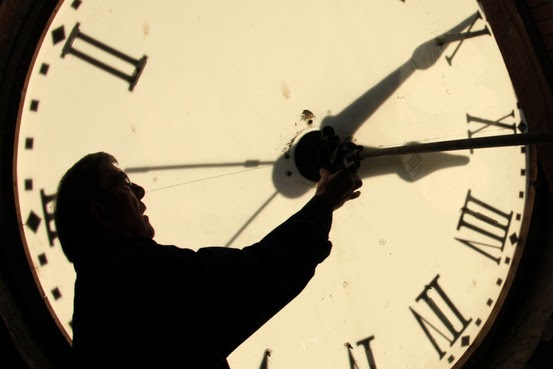The time is adjusted on the clock atop the Clay County courthouse in Clay Center, Kan., on Nov. 6, 2010.
Charlie Riedel
The state of Hawaii has never
observed daylight-saving time. Arizona tried it and rejected it. Utah
and Nebraska have considered dropping it. And this year,
Vladimir Putin
abolished the practice in Russia.
Meanwhile, one Alabama state senator likes the time change so much, he wants to stick with it year round.

Jo Craven McGinty
The historic reason
for observing daylight-saving time—which ends at 2 a.m. on Sunday when
clocks revert to standard time—is to conserve energy, by pushing
sunlight forward into the evening, reducing the need for electric
lights.
The U.S. government has found
the strategy works. But two academic studies published in peer-reviewed
journals rebut the idea, and one even concludes the policy increases
demand for electricity.
The most recent government study,
by the Department of Energy, tested whether expanding daylight-saving
time by four weeks in 2007 reduced the use of electricity, as intended.
The
study examined the additional weeks of daylight-saving time using data
provided by 67 utilities accounting for two-thirds of U.S. electricity
consumption. It compared average daily use in 2006, when there was no
daylight saving, with the same period in 2007 when the extension took
effect and found a reduction in electricity use of 0.5% in the spring
and 0.38% in the fall.
Hendrik Wolf,
an economics professor at the University of Washington whom the
Department of Energy consulted, said the analysis was limited and lacked
a scientific control area, making it impossible to determine whether
the changes were caused by daylight-saving time or other conditions.
“We don’t know how the U.S. would have behaved without the daylight saving time extension,” Mr. Wolff said.

No comments:
Post a Comment